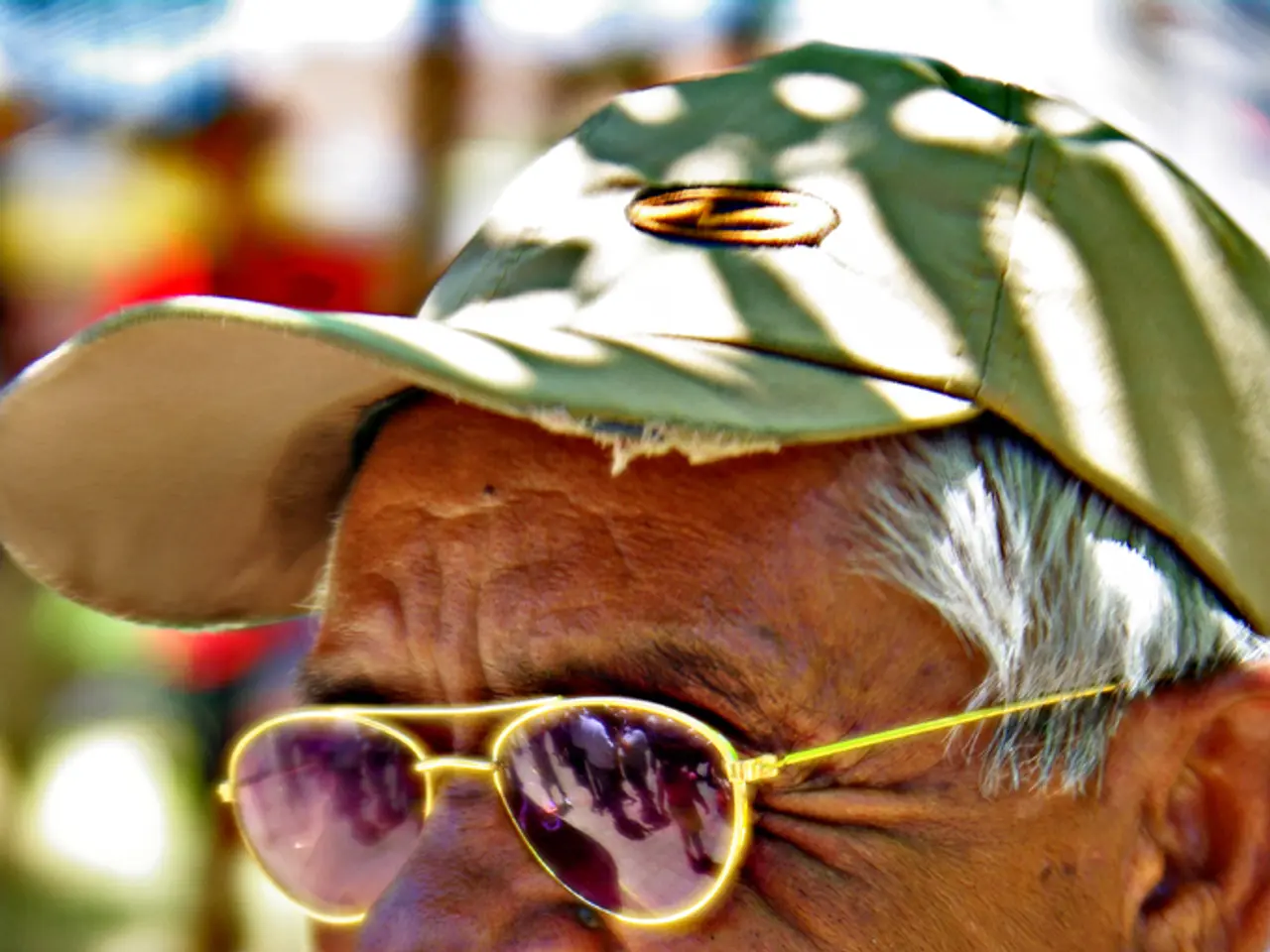Going Eyes-Deep into Dry Eye in the Golden Years 👵️👴️
Elderly Dry Eye: A Review of Current Research Insights
Dry eye isn't just a young person's problem, it's a common concern for mature adults too. Here's a lowdown on why that's the case and the latest research whirlwind on the subject.
Causes, Causes, Why the Heck Are My Eyes Dry in My Golden Years?
- Tear Production Decline: As you age, your tear-making glands decide to take it a bit easier, leaving your peepers parched. Additionally, hormonal shifts can wreak havoc on the quality and quantity of tears[3][5].
- Meibomian Gland Dysfunction (MGD): Say goodbye to a well-oiled machine—these tiny glands in your eyelids fail to uphold their duty, causing your tears to evaporate like a bad desert mirage[5].
- Underlying Health Issues: The stack of old-age health problems, such as diabetes and autoimmune disorders, often turn the heat up on dry eye[1][2].
- Medication Misadventures: Multiple prescriptions can unleash a torrent of dryness in your eyes[5].
- Blinking Dropout and Eyelid Shenanigans: Older folks may blink less fully or have lid shenanigans that throw off tear stability and encourage evaporation[5].
- Environmental and Lifestyle Factors: Lending a hand to your dry eye dilemma might be contact lens usage, dry or windy environments, or staring at screens for a verrry long time[5].
Yabba Dabba Science on Dry Eye in Older Adults
- Age-Friendly Therapy: Studies demonstrate that systemic diseases and multiple meds in older adults can ramp up dry eye risk like nobody's business, necessitating treatments tailored to these underlying issues[2].
- The Tear Film Mystery: Modern research emphasizes falling tear film stability and increased evaporation due to MGD as key eye-watering mysteries, particularly prevalent in aging populations[2].
- Hormones and Tear Tumbling: New research suggests that hormonal downturns with aging impact both the watery and oil layers of your tear film, so solutions might need a hormone-inspired twist[3][5].
- Detailed Exams: Revolutionary eye exams now delve into tear quality, gland function, and ocular surface health, allowing for better customized strategies[1].
Tear It Up! Solutions for a Soothing Eye Adventure
- Artificial Tears: Over-the-counter eye tears can hydrate and calm your eyeballs[4]. Opt for preservative-free varieties if you're a frequent user.
- Hydrate: Drinking plenty of H2O keeps those eyes on fleek[4]. Aim for at least eight glasses a day.
- Protect Your Orbs: Wear shades outdoors to guard your eyes from pesky wind, dust, and sunbeams. Consider humidifying your winter lair.
- Lid Hygiene: Maintaining clean eyelids prevents clogs in your oil glands along the eyelid edge[4].
- Follow Your Doc's Call: If you've got underlying health woes contributing to dry eye, work with your doctor to manage those conditions effectively—they might suggest specific eyeball treatments.
Stay cool, dry eye warriors! By knowing the root causes and following these simple tips, you can keep those peepers feeling a zillion times better. And if dry eye continues to annoy you, don't be shy—reach out to your healthcare provider for the support you deserve. 🌟🌍💧💖💎
- Dry eye in the elderly can be attributed to reduced tear production, a problem that intensifies with age.
- Hormonal shifts during aging can impact the quality and quantity of tears, contributing to dry eye.
- Meibomian Gland Dysfunction (MGD) is a common issue in older adults, causing tears to evaporate quickly.
- Underlying health conditions such as diabetes and autoimmune disorders can exacerbate dry eye symptoms.
- Medications may unwittingly trigger dryness in the eyes, especially in older adults taking multiple prescriptions.
- Older adults may blink less fully or exhibit lid irregularities that disrupt tear stability and promote evaporation.
- Environmental factors like dry or windy conditions, and prolonged screen time, can exacerbate dry eye issues.
- Age-specific therapies are being developed to address the increased dry eye risk posed by systemic diseases and multiple medications in older adults.
- Modern research focuses on understanding the instability of the tear film and increased evaporation due to MGD, particularly prevalent in aging populations.
- Hormonal changes with aging affect both the watery and oil layers of the tear film, requiring hormone-inspired solutions.
- Revolutionary eye exams now assess tear quality, gland function, and ocular surface health, enabling personalized strategies for dry eye management.
- Using artificial tears can provide hydration and relief for dry eyes, with preservative-free varieties recommended for frequent users.
- Consuming adequate water helps maintain healthy eyes and prevent dry eye symptoms.
- Protecting the eyes from outdoor elements like wind, dust, and sun is vital for maintaining eye health.
- Adopting good lid hygiene prevents clogs in oil glands along the eyelid edge, reducing the risk of dry eye.
- Managing underlying health conditions effectively, as advised by healthcare providers, can help alleviate dry eye symptoms.
- Chronic conditions such as COPD, type-2 diabetes, and cancer can negatively impact respiratory conditions, digestive health, eye health, hearing, mental health, and skin care.
- Therapies and treatments for Alzheimer's disease, multiple sclerosis, migraines, cardiovascular health, psoriasis, rheumatoid arthritis, and neurological disorders are crucial in improving overall health and wellness, including mens' and women's health, sexual health, nutrition, aging, and parenting.








